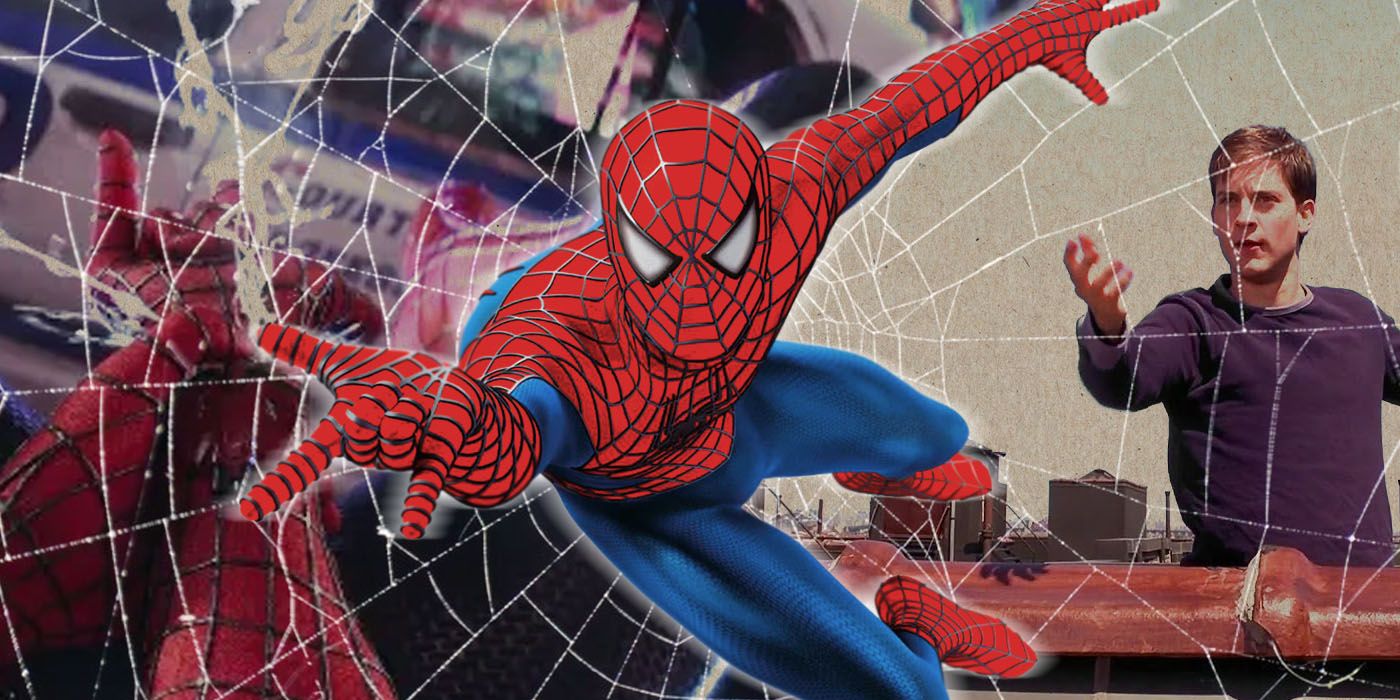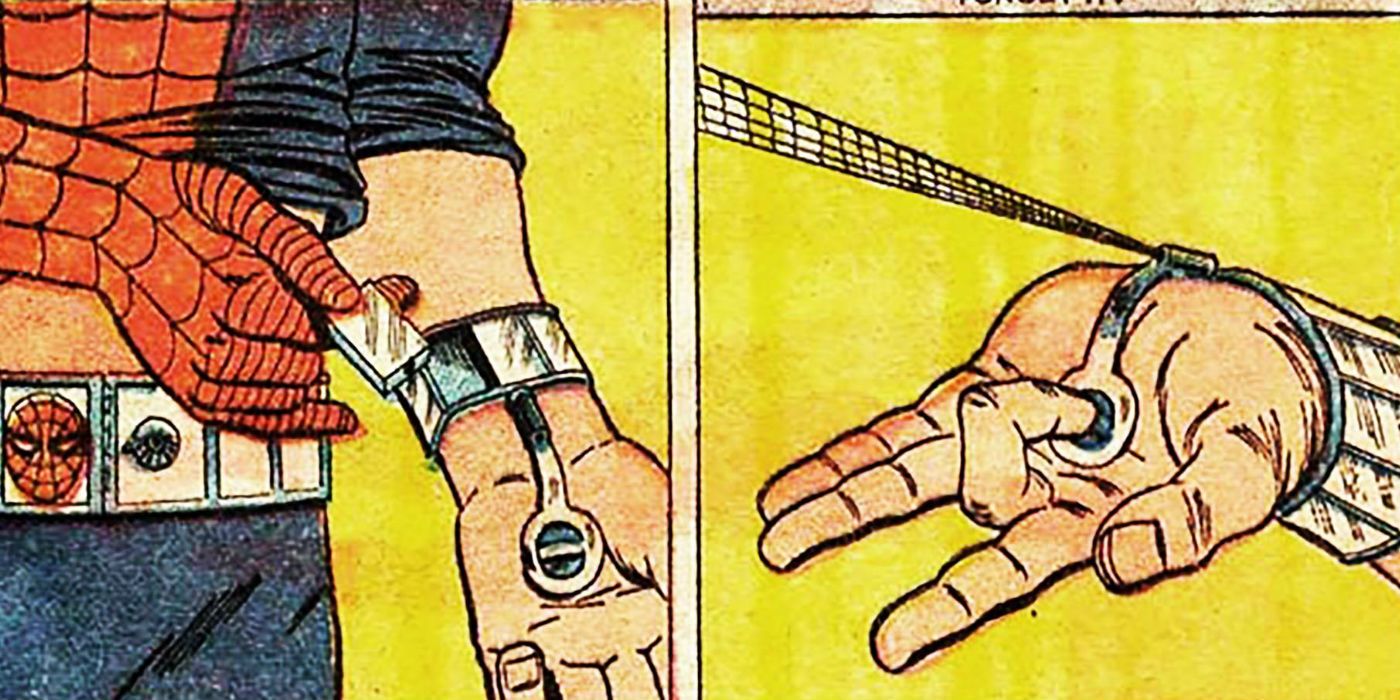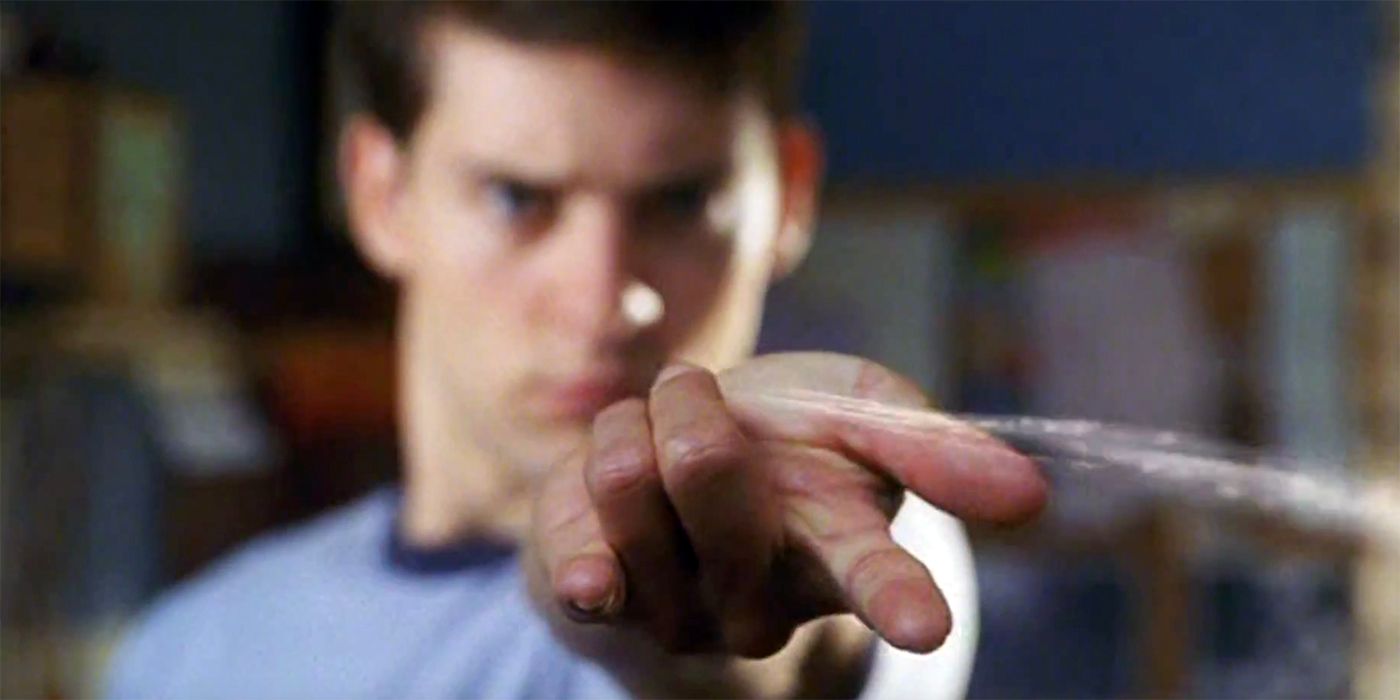Spider-Man’s web-shooters have been considered by some fans to be an essential part of the character’s appeal. Created by a teenage Peter Parker, the wrist-worn devices emit synthetic webbing that allows him to swing between the skyscrapers of New York City and stop criminals in their tracks.
The element worked well in the comics, from the time of Spider-Man's 1962 debut, in part because it's an easy way to establish the character as a young genius. It also provided an extra layer of conflict because he could run out of web fluid during a battle. But, of course, not everything that works well in the comic-book source material is as easily translatable to film. That was particularly the case with the web-shooters, as their invention by a teenager could be met with skepticism by audiences, which was something director Sam Raimi seemed to take into account when making 2002's Spider-Man.
In the original Spider-Man trilogy, Raimi chose to give Peter Parker organic webbing. It was one of the results of the spider bite rather than crafting artificial web-shooters. The idea was thought up by James Cameron, who had written a film treatment for the character back in 1993. Wanting the powers to serve more as a metaphor for puberty, Cameron had taken a slightly Kafkaesque approach to the character and made Peter's change into a superhero more physical in nature. Instead of the character simply possessing the powers of a spider, it was implied that he was also partially becoming one. The organic webs were a natural extension of this.
Raimi and the film's screenwriter, David Koepp, decided to utilize some of these ideas into their own script, including the organic webs. This was partially done to keep in line with the audience’s suspension of disbelief, but there was also an additional reason for it. Both Raimi and Koepp felt that it was better to "go all the way" with Peter's transformation. According to Raimi, it made sense that a character with the powers of a spider could organically produce webbing rather than make it synthetically. It was a controversial change to the character, but it was, arguably, a smart decision on their part, especially in hindsight.
The decision to give Spider-Man organic webbing not only made sense within the context of the story but also provided the film with more time to focus on Peter's character development. Because the plot didn't have to take a detour to explain how a teenager was able to not only build web-shooters but also create web fluid for the device, more time was allotted to building a relatable character for audiences to follow. Furthermore, by making the webs organic, it essentially made the power more of an integral part of the character. Spider-Man 2, for instance, showed just how important it was by briefly taking said power away from him.
Nowadays, of course, audiences are generally more used to the traditional web-shooters. The Amazing Spider-Man films, starring Andrew Garfield, and the current Spider-Man franchise, featuring Tom Holland, have given the character mechanical web-shooters rather than organic webbing. However, like the original trilogy, they chose to take their own creative liberties with it.
In The Amazing Spider-Man, for instance, Peter purchased his webbing through Oscorp rather than developing the formula on his own. And the current Spider-Man relies mostly on his connection to Tony Stark and the more fantastical nature of the MCU to make the concept easier to digest. In both cases, the films had to sacrifice comic book accuracy to fit the web-shooters within the context of their stories. The organic webs were just another way of doing that without sacrificing the importance or intellect of the character.



